Whether you are looking to make a show-stopping book tree for the holidays or you want to ensure you have an inclusive classroom library, this post is for you!
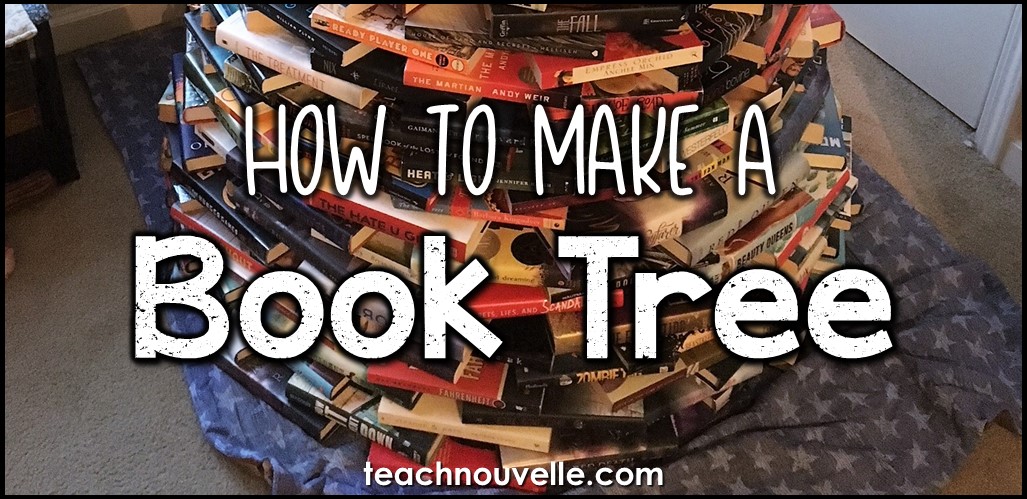
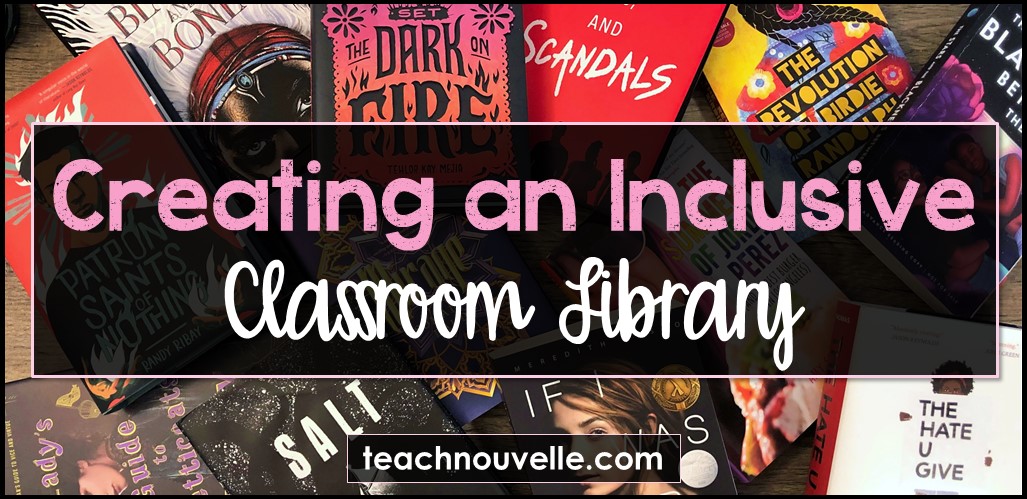
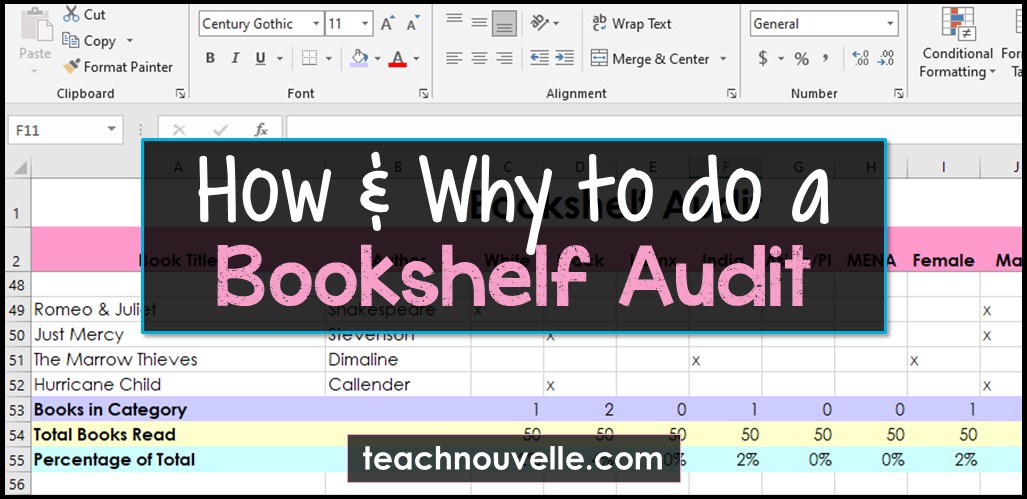
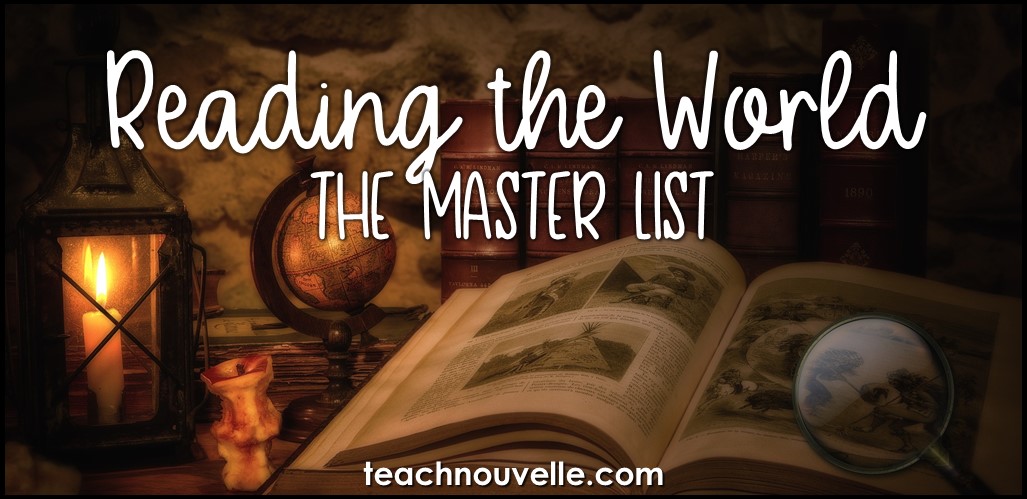
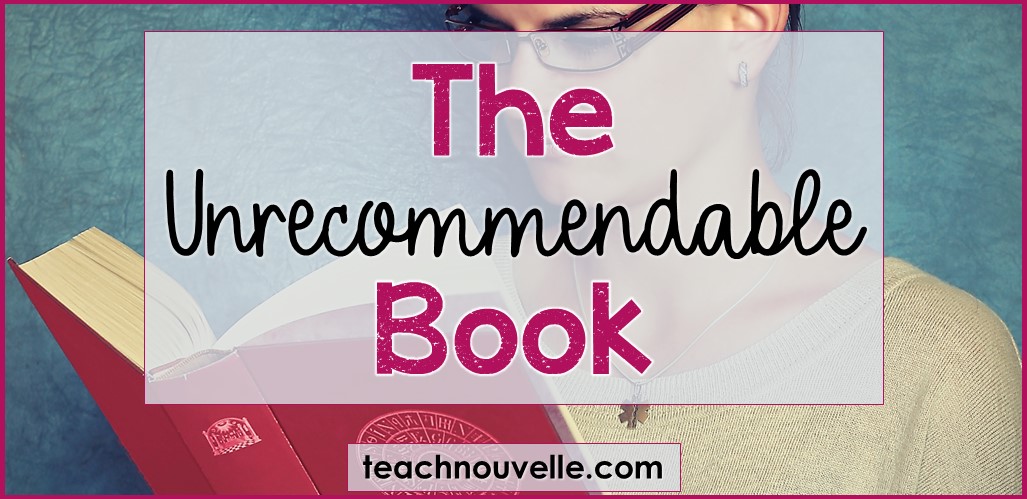
How to Create an Inclusive Classroom Library & Make a Show-stopping Book Tree
Click the tabs below for resources, tips, & tricks on all-things-books!
A book tree is a great holiday decoration for nerds and English teachers, am I right? This can be great for your home, office, or classroom! Here’s how to make a book tree AND our book tree reveal for 2017.
This is our second year with a book tree, and here are some tips as you create your own.
1. Plan Your Book Tree
How tall will your tree be? Where will you put it? Book trees are very heavy, so it’s important to choose a place that is realistic for the entire time you’ll have the tree up. For example, we had to plan not to be able to open our closet for a month, so we removed our frequently-used items (like our toolkit).
You’ll also need to make sure you have enough books. We forgot to count, but I’d estimate we used 400-450 books for our 4.5′ tree. Once you have your plan, separate your books by depth, or thickness. This helps make your book tree much more stable.
For your classroom, it would be really easy to do this by using different class sets of novels (ones you read earlier in the semester, of course!). You could even alternate colors in each layer for a cool effect.
2. Build a Strong Foundation
Before sloping your tree inward, create a strong base by making several layers of the same diameter. This will help stabilize your tree and keep it from caving in.
You should lay your books as though they were bricks, always placing one over the crack from the previous layer. This is super critical to avoid wobbly books later!
3. Add Support
This year, we decided to add a stool to the center of our book tree to support the upper level. We weighted this down with some heavy coffee table books and a LOT of Animorphs (they wanted to be in the tree too!).
4. Slope Inward
At this point, you can start to slope inward more aggressively. It doesn’t matter whether you’re using thick or thin books, as long as the thickness is the same within each layer.
5. Top with a Favorite Book or Series
It’s super fun to top with a favorite series. We tried for all of the Harry Potter books, but had to settle for just a few because it got wobbly. At the very top, we’ve got His Dark Materials by Philip Pullman.
6. Decorate & Brag
Congratulations! You’ve finished your book tree! Now, you can decorate it with lights and ornaments! We have a Think Fairy at the top of our tree, small LED lights, and several ornaments. Take pictures of your tree and if you post on Instagram, I’d love to see it! Tag me @nouvelle_ela and I’ll bow down to your mad skills. 🙂
Looking for book reviews to help you build your classroom library?
Check out my recommendations here.
Books can be both mirrors, reflecting students’ lives, or windows into the lives of others. You know the value of creating an inclusive classroom library, but maybe you’re not sure how to start.
Our guest today is Dr. Sheila Frye from Teaching Literacy. She’ll share practical tips for auditing what you have, making informed purchasing choices, and thinking critically about representation.
As we go about our daily teaching, we constantly make nuanced choices that send silent messages to our students. Interactive notebooks say that we value hands-on learning. Integrated technology communicates a desire to be engaging in our instruction.
But what about our books?
I first started taking a deep dive into diversifying curricula and my classroom library about twenty years ago. Back then, there weren’t as many published books featuring people of color in non-stereotypical roles. (And don’t get me started on LGBTQ+ characters!) Today, books like Front Desk, Simon vs. The Homo Sapiens Agenda, and The Hate U Give are available for student immersion in ways that make my heart swell.
Why Does Representation Matter?
Powerful initiatives like #WeNeedDiverseBooks encourage educators to place a broad spectrum of texts in students’ hands. Expert Dr. Gloria Ladson-Billings posits that diverse books serve as both mirrors and windows to the world. Students who see themselves reflected in literature gain a sense of validation that their voices matter. That THEY matter. Diverse books also provide a glimpse into the lives of people who may differ from the reader. From there, empathy grows.
Embracing a more inclusive classroom library/curricula is like getting your mind ready to speak, corralling your thoughts. The next step is like a vocal cord warm up. It involves taking a hard look at how well our intentions match with our reality.
A 2018 national survey published by the School Library Journal found that 34% of school librarians felt that their collection reflects the larger community “closely” or “very closely.” Reading that statistic floored me. Only 34%. That translates into 66% – two-thirds! – who say their collection doesn’t match the backgrounds of the people in the community.
The silence is deafening.
There is a clear need for increasing the number of diverse books in schools to reflect accurately the population served.
Examining your own library
1) GOOGLE
Go online and search the demographics of your school. If you can’t find that information, look for the district’s demographics. If you’re at a public or charter school, student demographic data is public information. You should be able to find it easily.
2) NOTE
Write down the data.
Example: Here’s the racial/ethnicity information for NYC as of 9/2019: * 40.5% Latinx * 26.0% Black * 16.1% Asian * 15.0% White
3) REFLECT
What does this data tell me?
Is this data in line with my perceptions?
What, if anything, surprises me about this data?
4) AUDITING YOUR BOOKS
It may sound intimidating, but a book audit is when you take an inventory of your books considering specific characteristics, such as the ethnicity of the protagonist.
You could start your inventory using this helpful tally sheet or by creating your own in Google Sheets or Excel. Including the titles of the books is optional. If you’re feeling overwhelmed, just do the tally marks. The point is to identify whose voices are being represented through the books.
After you’ve gone through your school/class library and/or curricula, total up each column.
Now, sit with your data.
What patterns emerged?
Whose voices are the loudest? Quietest?
How does this data compare with the demographics of your school/community?
What gaps do you need to fill? (Remember, books should also be windows.)
These are hard questions. Emotions may arise that may not make us feel too good. Remember that diversifying your library/curricula is important work. We know better. Now we have to do better. It’s time to amplify your students’ voices and let them be heard.
To assist you in this undertaking, I have a list of facilitation questions available for FREE on my TPT store.
Student-Facing Resources/Recommendations
Students can and should take part in the book audit! They should also make recommendations on which diverse titles to add to our growing library/curricula. (It wasn’t until a middle-school student of mine one day pointed out that he was “tired of reading about black people being slaves” in his mainstream classes that I conducted my book audit.) Kids have important things to say. We need to listen to them!
Here are some videos on the necessity of diverse books. Your secondary students could watch these and discuss creating stronger representation in the curriculum. These videos are also helpful for you and your colleagues as you undertake these audits.
6 Quotes from YA Authors on Why #WeNeedDiverseBooks (1:59)
This video from EpicReads highlights a diverse group of well known YA authors. They share how inclusivity in literature (or a lack of it) has impacted them. Plus, you could play this video without the sound and have the same impact.
The Windows and Mirrors of Your Child’s Bookshelf by Grace Lin (12:23)
This is a beautiful and moving TEDx talk from Newbury Book Award-winning children’s author, Grace Lin. “What your child reads sets the path for their own self-worth as well as how they see others… the books that are not on your child’s bookshelf are just as important as those that are.” (From YouTube description)
We Need Diverse Books Campaign (4:11)
Rockstar YA authors such as John Green, Jacqueline Woodson, Marie Lu (and more!) share in their own words why “#WeNeedDiverseBooks”
Mirrors, Windows, and Sliding Doors (1:33)
Some readers will find a mirror in diverse books, others with find a window, or a “sliding glass door” that allows them to see a new POV. This video provides a great reminder that an inclusive classroom library is important for ALL kids.
Tomi Adeyemi on Why She Writes Books Staring Children of Color (1:14)
In this short video Adeyemi, bestselling author of Children of Blood and Bone, shares how a lack of diverse books in her childhood inspired her to feature characters of color in her own writing.
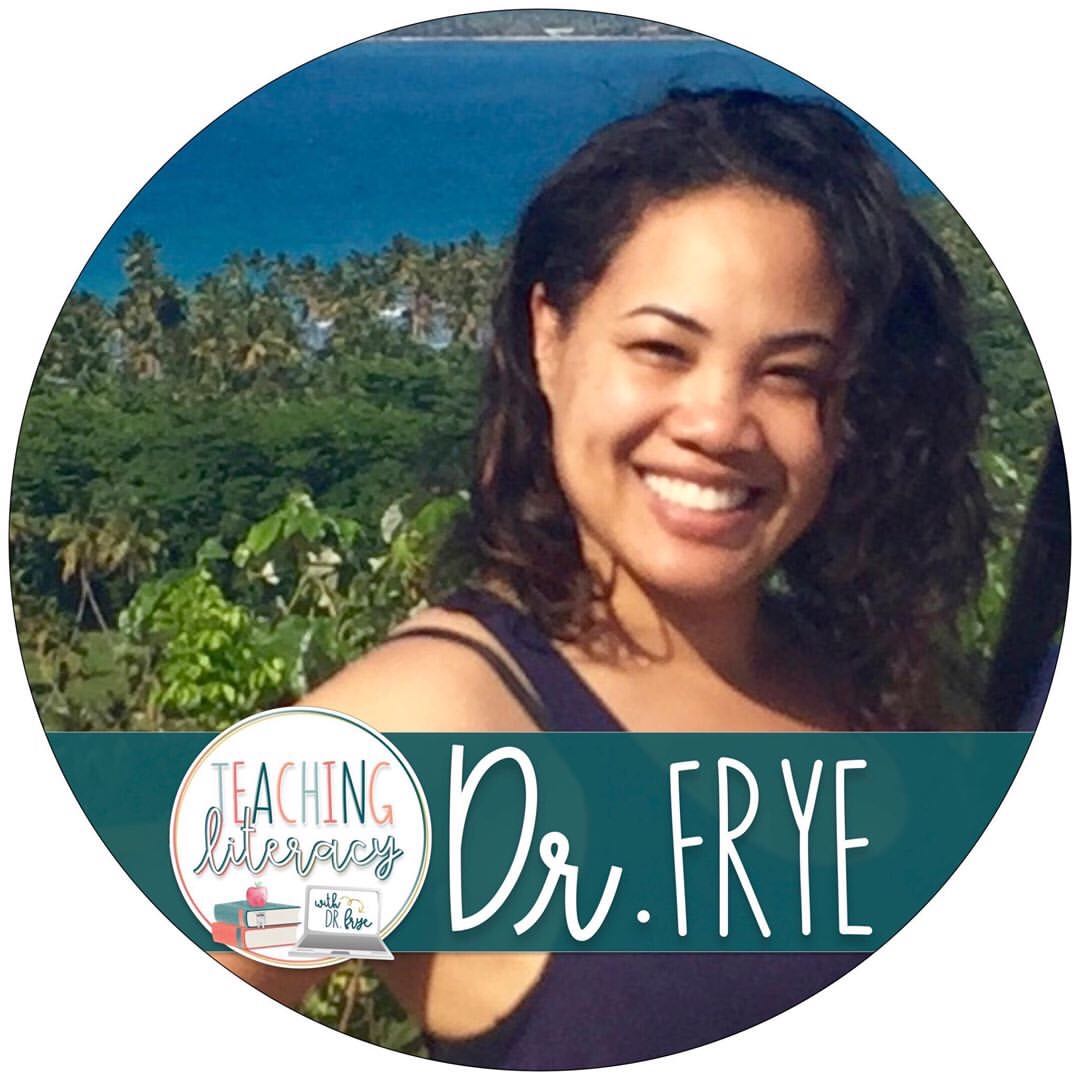
Looking for classroom library ideas? In this post I’ll show you to audit your shelves and find the missing or under-represented voices.
Classroom Library Ideas: Finding What’s Missing
A diversity and inclusion audit is one tool you can use to analyze your personal and classroom reading choices. It is a data-driven analysis of the representation in the texts you read. These numbers do not represent the end of your work to be a well-rounded reader, but rather a starting place for reflection.
Why Audit?
Being able to look at your reading choices or the variety of texts you present to your students at a glance helps you understand the voices you learn from and share.
In 2019, Dr. Sheila Frye from Teaching Literacy wrote a guest post on my blog about Creating an Inclusive Classroom Library. However, it wasn’t until Ashley Bible from Building Book Love suggested making a pie chart that I really “got” it.
For me, it was easy to say I was reading diversely, but the overall view the pie chart gave me showed I was overestimating my reading variety.
One Step
This audit is a single step in reflecting on what you read. Your goal is totally personal. After all, even if a hundred percent of the books you read are by LGBTQ+ Black womxn, you’re still going to get a diverse range of stories. Race isn’t everything. Gender identity isn’t everything. Sexuality isn’t everything. These are all just pieces of making sure your students have access to a range of stories and experiences.
The Nitty-Gritty
I’ve designed a quick Excel sheet and tutorial to show you how to collect data and present it in a pie chart. I’ve provided some categories that I use for my own data, but you can change these up, if you like. For example, you could use the same technique to count how many books of each genre you have in your classroom!
Finding New Voices
If you’re looking for tools for creating a more inclusive classroom library and curriculum, here are some posts you can check out:
Creating an Inclusive Classroom Library by Sheila Frye
Big List of Inclusive Text Recommendations (by genre) by Danielle Hall
Rethinking the Classics by Danielle Hall and Sheila Frye
How to Diversify Your British Literature Class by Ashley Bible
Diverse Short Stories to Teach by Stacey Lloyd
So, like you, I spend a lot of time thinking about how to get my teenage students to love reading and writing. I spend a lot of time recommending books to teachers to help get their teenage students to love reading. I even started a podcast to help teachers, librarians, and students find new YA titles they’ll love. In short, I think about book recommendations a lot.
But sometimes, a book is unrecommendable.
This post contains Amazon Affiliate links.
If you choose to purchase this book through one of these links,
I’ll get a small commission from Amazon.
This will help support the maintenance of this blog so that I can bring you more great content!
Our original plan for this week’s podcast episode was to read the new book Ship It by Britta Lundin. She’s amazingly talented and currently writes on Riverdale. She and her wife live on the Oregon Coast (I have a wife! I’m from Oregon! I want to live on the coast!), so of course she resonated with me before ever reading a word of her book.
But as I started to read Ship It, I got the feeling that this would be a difficult book recommendation. I needed to figure out how to articulate why.
Because, here’s the thing: I loved Ship It! I finished it today, and I laughed, I cried… I saw myself in the characters and in the major arcs of the story. But just because you love a book and a book is written for teens, doesn’t necessarily mean that you can put a book into a teenager’s hands.
Let me back up.
A Book I WISH I Could Recommend (but can’t)
Ship It
is about a genre television show that feels a lot like Supernatural. It features two main characters, a demon named Heart and a demon hunter named Smokey. Even though it follows these two men, the audience is primarily teenage girls. There’s action, there’s humor, and there’s chemistry between the two dudes. Claire, a fanfiction writer, shows up at a convention and asks about the potential of a gay romance for these two characters. One of the actors, Forest (who plays the demon hunter), blows up and calls her crazy. The whole story kind of goes from there – Claire, arguing for more queer representation, and Forest, trying to shut her down at every turn.
It’s a great book.
But I could never recommend it to a student, and here’s why.
Among all of its great qualities, this book is, at its core, about fanfiction, fan ownership of content, and fans’ abilities to get creative with their reading of a text or show. Claire writes homoerotic fanfiction, and there’s no skirting around this fact.
Subversive Literature & Fandom Culture
And here’s where we get into the weeds. Our teenage students are fans of tv shows and movies and books. They’ll find the fandoms if they look. They’ll ship pairings if they feel like it. They will read and write fanfiction of all shapes and colors, if they want. I spent a lot of time in the Harry Potter fandom when I was in high school. Most of what I read and wrote was about the Marauders’ era, but I also read everything Cassandra Clare was writing before she became uber-famous. I made up characters and added them into the HP universe, and I spent hours and hours reading, writing, and commenting in a totally extracurricular way. No teacher told me to do it.
There are books that are subversive in one way or another, and the book becomes “less cool” somehow if a teacher recommends it. These are the books that get passed around in secret, as if we don’t know they’re out there. This might be because of a steamy romance, all-too real depictions of drug use and violence, or even politically commentary that the students are exploring for the first time. It’s an amazing feat of literature to be able to teach us so much about the world and its natural that we want to offer this to our students…
…but sometimes, we can’t.
Sometimes, a book is unrecommendable.
In addition to a book losing its “coolness” factor if the book recommendation comes from an adult, recommending the “wrong” book could lose you your job. You still teach teenagers. It’s one thing if they’re reading subversive literature, and another if you recommend them.
And so, I cannot tell you to add Ship It by Britta Lundin. Even if it depicts a teenage reality that resonated with me (fanfiction, conventions, issues of representation), I cannot tell you to place it in a student’s hands. Perhaps this is one that you add to your school library. Maybe you leave it in a disorganized stack in the corner of your classroom. Perhaps this is one that you just buy a few copies and leave them on a park bench or in the cafeteria. It’s hard to know how to share subversive fiction.
Instead
Here’s what you can do instead. Teach your students how to love characters and how to imagine different storylines for them. Teach your students how to think critically about a work’s representation of women, LGBTQ+ people, people of color, and people with disabilities. Teach your students how to read creatively and how to dream big for the fiction they love. And, at the end of the day, perhaps encourage them to seek others who love the fiction as much as they do.
Hello, friends! I’m here today to announce a big dream: I want to read the world. I plan to read a book from every country in the world, and record my progress here. I believe that, as a teacher, I need to read widely and often, and be able to introduce students to works and worldviews they haven’t experienced yet.
What could better equip me for this mission than having a world full of books in my heart? Onward to Reading the World!
This all started for me when I read Tamika Gibson’s Dreams Beyond the Shore and learned much more about Trinidad and Tobago than I ever knew I didn’t know. This really revealed a major blindspot in my life as a reader, and I set out to find a fix.
It turns out, this is not a new idea. Check out this TED Talk by Ann Morgan, a UK author who undertook the challenge in 2012.
It’s going to be difficult, but worth it. I read English, French, German, and Spanish, so I hope to be able to cover a lot of ground that way. Still, there’s a lot out there that hasn’t been translated.
This is going to be my cornerstone post for this project. As I answer some hard questions, I’ll link to those answers here. As I read and review books, I’ll add the links here. As people leave me recommendations, I’ll add them here.
The “Rules”
Use a very generous list of countries. The biggest reason for this is that I’ve lived in Puerto Rico and worked with Kurds, and both of these people deserve to have their own literature amplified. The first is a territory and the second is a stateless nation, but they both need to be on the list.
Prioritize authors “from” the country. I’m going to let authors self-identify on this one, because anything else is just me applying my American judgement, and that defeats the whole purpose of reading the world. There are a lot of reasons a person may not live in their native land, or reasons they may cling to the national identity of their parents. I’ve worked with Afghan kids born in refugee camps – are they not Afghan?
Prioritize fiction set in the country, or non-fiction about national issues. I’ll probably also read some poetry, because I love it.
Prioritize marginalized voices.
Prioritize classroom application potential. I’m reading for myself, but I’m also reading for my students. I want to be able to put books in their hands, so I’m going to review from my teachery perspective as always.
Reading the World List
Read
Recommended
Stand-in*
Afghanistan
A Thousand Splendid Suns (Khaled Hosseini)
Albania
Chronicle in Stone (José Eduardo Aqualusa)
Algeria
Memory in the Flesh (Ahlam Mosteghanemi)
American Samoa
Where We Once Belonged (Sia Figiel)
Andorra
Angola
The Book of Chameleons (José Eduardo Agualusa)
Anguilla
Blue Beans (Patricia J. Adams)
Antigua & Barbuda
Annie John (Jamaica Kincaid)
Argentina
The Motorcycle Diaries (Che Guevara), Ficciones (Jorge Luis Borges)
Armenia
All the Light There Was (Nancy Kricorian)
Aruba
Australia
Graffiti Moon* (Cath Crowley)
Austria
The Story of the Trapp Family Singers (Maria Von Trapp), Malina (Ingeborg Bachmann)
Azerbaijan
Bahamas, The
Bahrain
Bangladesh
Barbados
Belarus
Belgium
Belize
Benin
Bermuda
Bhutan
Bolivia
Bosnia & Herzegovina
Zlata’s Diary* (Zlata Filipovic)
Botswana
When Rain Clouds Gather (Bessie Head)
Brazil
British Virgin Is.
Brunei
Bulgaria
Burkina Faso
Burundi
Cambodia
Cameroon
Behold the Dreamers (Imbolo Mbue)
Canada
The Handmaid’s Tale* (Margaret Atwood)
Cape Verde
Cayman Islands
Central African Rep.
Chad
Chile
Cuidad de las Bestias* (Isabel Allende), Twenty Love Poems (Pablo Neruda), Ten Women (Marcela Serrano)
China
Empress Orchid (Anchee Min)
Colombia
A Hundred Years of Solitude (Gabriel García Marquéz)
Comoros
Congo, Dem. Rep.
How Dare the Sun Rise (Sandra Uwiringiyimana)
Congo, Repub. of the
Cook Islands
Costa Rica
Cote d’Ivoire
Croatia
Cuba
The Surrender Tree (Margarita Engle)
Cyprus
Czech Republic
Denmark
Djibouti
Dominica
Dominican Republic
East Timor
Ecuador
Egypt
L’Enfant Multiple* (Andrée Chedid)
El Salvador
Equatorial Guinea
Eritrea
Estonia
Ethiopia
Cutting for Stone (Abraham Verghese)
Faroe Islands
Fiji
Finland
France
(Tons here already — I’ll dig up titles)
French Guiana
French Polynesia
Gabon
Gambia, The
Gaza Strip
Georgia
Germany
Die Fliessende Koeningen* (Kai Meyer), Tintenherz* (Cornelia Fünke), Die Blechtrommel (Günter Grass)
Ghana
Gibraltar
Greece
The House By the River (Lena Manta)
Greenland
Grenada
Guadeloupe
Guam
Guatemala
I, Rigoberta Menchu (Rigoberta Menchu)
Guernsey
Guinea
Guinea-Bissau
Guyana
Haiti
Krik? Krak! (Edwidge Danticat), American Street (Ibi Zoboi)
Honduras
Hong Kong
Hungary
Iceland
India
The God of Small Things (Arundhati Roy)
Indonesia
The Question of Red (Laksmi Patmunjak)
Iran
Persepolis* (Marjane Satrapi), Reading Lolita in Tehran (Azar Nafisi)
Iraq
Thura’s Diary (Thura Al-Windawi)
Ireland
The Accident Season* (Moira Fowley Doyle)
Isle of Man
Israel
Italy
Invisible Cities (Italo Calvino)
Jamaica
Everything, Everything* (Nicola Yoon)
Japan
The Housekeeper and the Professor (Yōko Ogawa)
Jersey
Jordan
Kazakhstan
Kenya
Kiribati
(Kurdistan)
Kuwait
Kyrgyzstan
Laos
Latvia
The Golden Horse (Rainis), Soviet Milk (Nora Ikstena)
Lebanon
Lesotho
Liberia
Libya
Liechtenstein
Lithuania
Between Shades of Gray** (Ruta Sepatys)
Luxembourg
Macau
Macedonia
Madagascar
Malawi
The Boy Who Harnessed the Wind (William Kamkwamba)
Malaysia
Maldives
Mali
Malta
Marshall Islands
Martinique
Mauritania
Mauritius
Mayotte
Mexico
The Hummingbird’s Daughter (Louis Alberto Urrea)
Micronesia, Fed. St.
Moldova
Monaco
Mongolia
Montserrat
Morocco
Mozambique
Myanmar
Namibia
Nauru
Nepal
Netherlands
Netherlands Antilles
New Caledonia
New Zealand
Nicaragua
Niger
Nigeria
Under the Udala Trees (Chinelo Okparanta), We Should All Be Feminists (Chimamanda Ngozi Adichie), Zahrah the Windseeker (Nnedi Okorafor)
N. Mariana Islands
North Korea
Norway
Growth of the Soil (Knut Hamsun)
Oman
Pakistan
I Am Malala
Palau
Palestine
(Mahmoud Darwish), (Suheir Hamad)
Panama
Papua New Guinea
Paraguay
Peru
Philippines
Poland
Zlateh the Goat and Other Stories (Isaac Bashevis Singer), A Treatise on Poetry (Czeslaw Milosz)
Portugal
The Cave (José Saramago)
Puerto Rico
War Against All Puerto Ricans** (Nelson Antonio Denis)
Qatar
Reunion
Romania
Night* (Elie Weisel), It Was Today (Andrei Codrescu)
Russia
A Day in the Life of Ivan Denisovitch* (Aleksandr Solzhenitsyn), The Gray House (Miriam Petrosyan)
Rwanda
Saint Helena
Saint Kitts & Nevis
Saint Lucia
St Pierre & Miquelon
Saint Vincent and the Grenadines
Samoa
San Marino
Sao Tome & Principe
Saudi Arabia
Senegal
Serbia
Seychelles
Sierra Leone
A Long Way Gone (Ishmael Beah)
Singapore
Slovakia
Slovenia
Solomon Islands
Somalia
South Africa
When the Sea is Rising Red* (Cat Hellisen), Cry, the Beloved Country* (Alan Paton), Jump (and other stories) (Nadine Gordimer)
South Korea
The Vegetarian (Han Kang)
Spain
The Shadow of the Wind (Carlos Ruiz Zafón), The Light of the Fireflies (Paul Pen)
Sri Lanka
Sudan
Suriname
Swaziland
Sweden
A Man Called Ove (Frederick Backman), Still Waters (Vivica Sten)
Switzerland
Syria
Taiwan
Tajikistan
Tanzania
Thailand
Togo
Tonga
Trinidad & Tobago
Dreams Beyond the Shore* (Tamika Gibson)
Tunisia
Turkey
The Last Train to Istanbul (Ayse Kulin)
Turkmenistan
Turks & Caicos Is
Tuvalu
Uganda
Ukraine
United Arab Emirates
United Kingdom
(I’ll find a title to drop here, but you know… like everything ever.)
United States
(Also everything ever)
Uruguay
Uzbekistan
Vanuatu
Venezuela
Vietnam
Inside Out and Back Again* (Thanhha Lai)
Virgin Islands
(Tiphanie Yanique)
Wallis and Futuna
West Bank
Western Sahara
Yemen
Zambia
Zimbabwe
We Need New Names (NoViolet Bulawayo), Nervous Conditions (Tsitsi Dangarembga)
*These are books finished before the beginning of the challenge in November 2017. I’ll loop back around to these at the end, perhaps.
**These are books that don’t meet the requirement of an author self-identifying as a national. I’ll continue to look, and add to these as needed.
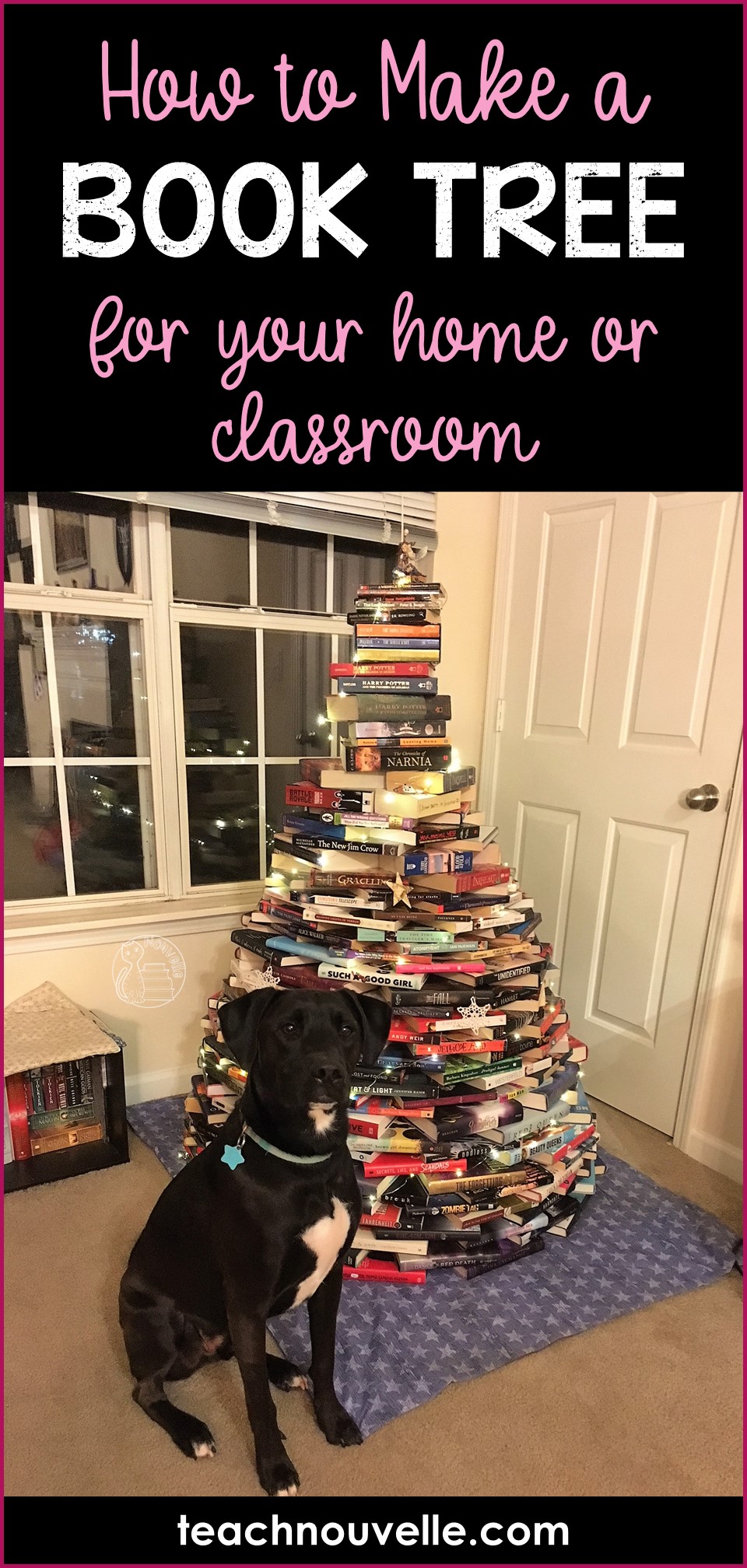
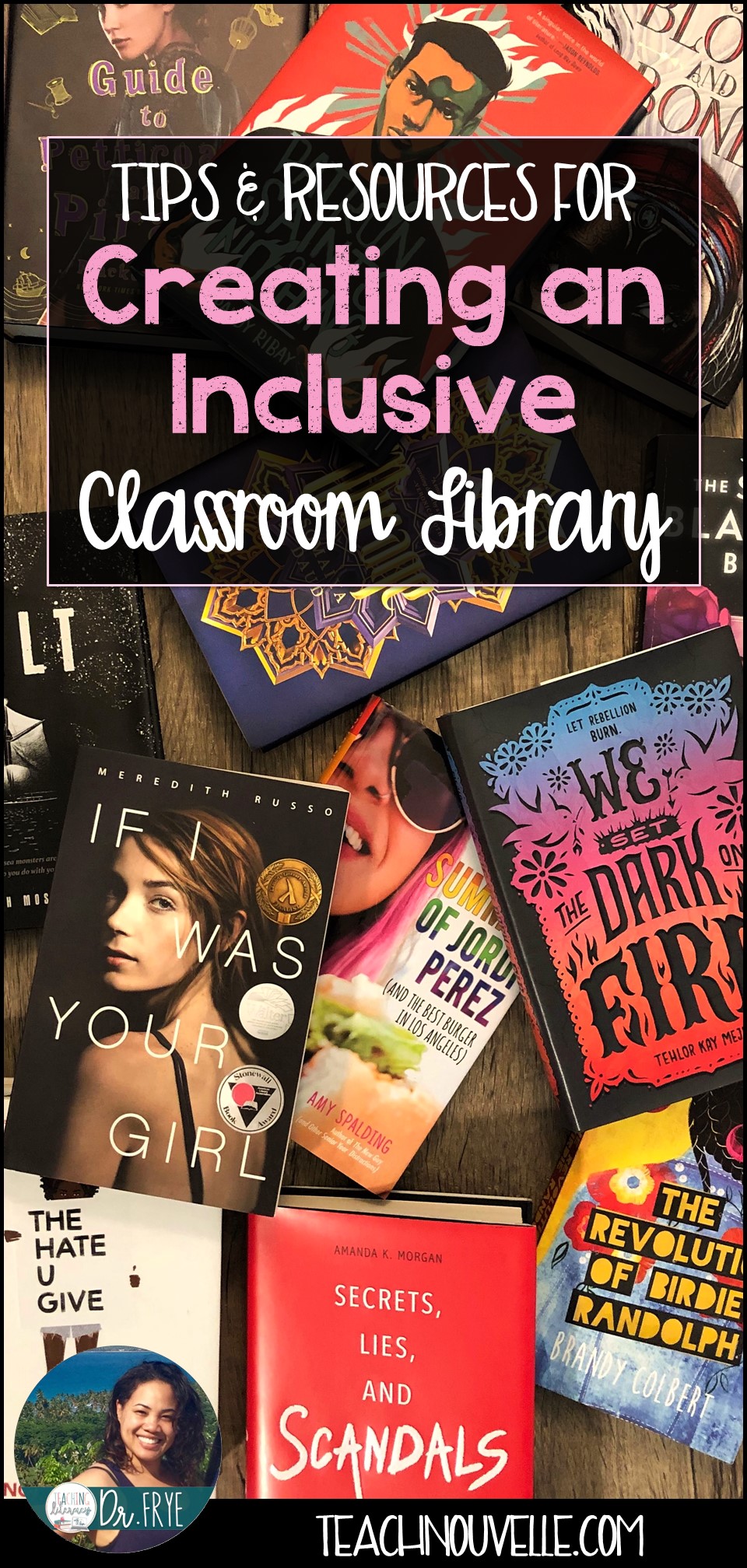
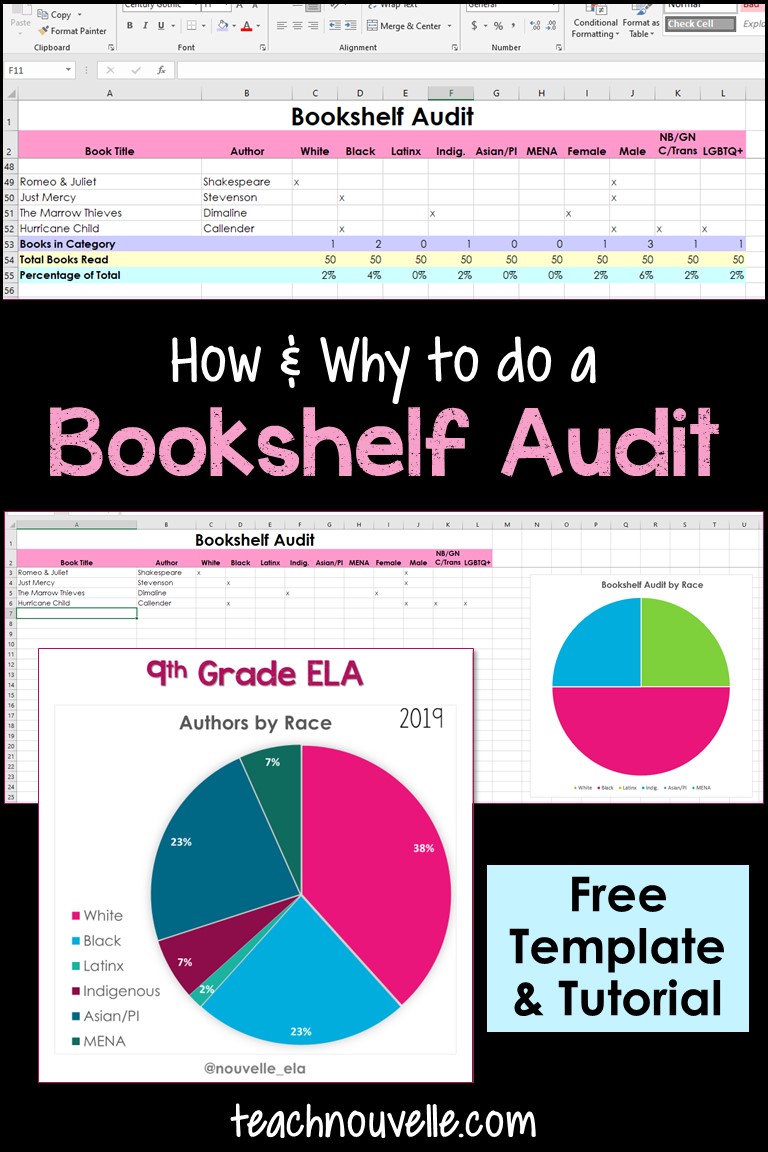
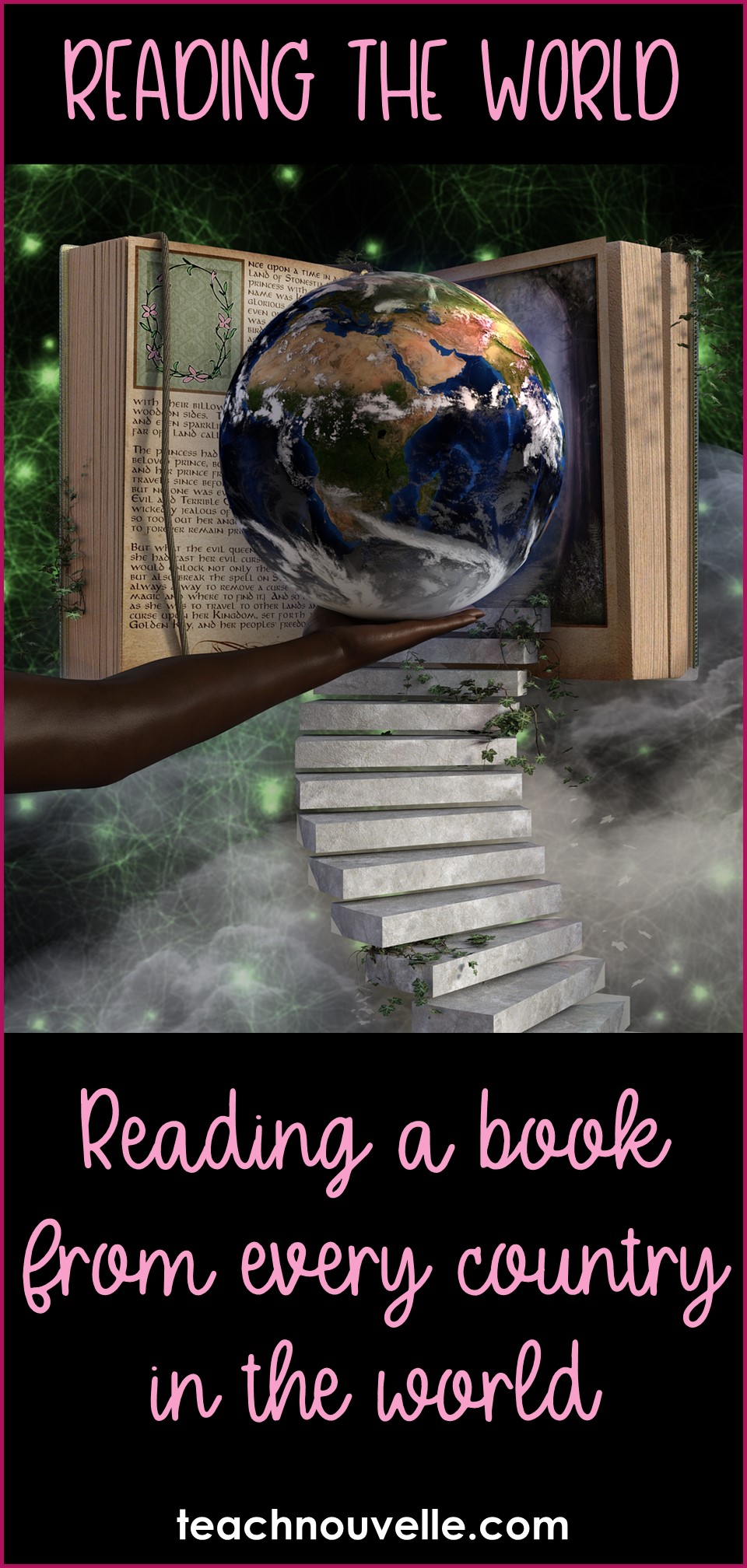
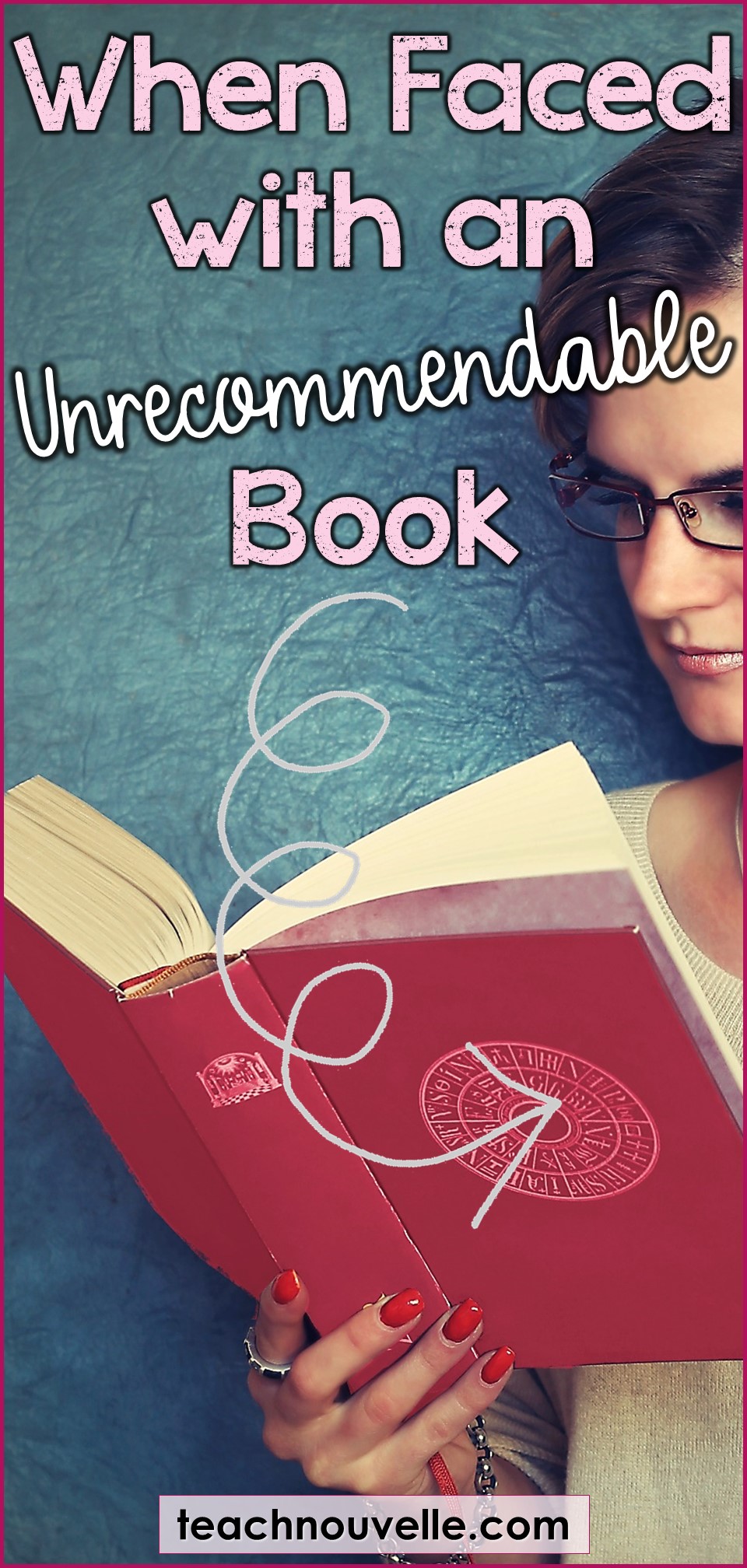
Closing Remarks
I would like to say a HUGE thank you to Dr. Frye for generously sharing her knowledge and experience. We met for the first time this year at a conference in Austin, TX, and I will never forget how warm and welcoming she was. Sheila truly cares about making a difference for students and lifting up her fellow educators.
I know this might seem like a Herculean undertaking, but we are here to support you! The impact that this will have on students who are feeling left out is huge.
Books can change lives, and so can you! If you want recommendations for specific titles, you can find all of my genre recommendation lists in one post.
Don’t forget to bookmark it! 🙂
Have you already performed a book survey or audit, or made some conscious steps toward creating a more inclusive classroom library?
Are you feeling too overwhelmed to even know where to start? Find me on IG @nouvelle_ela, I would love to hear about your classroom journey!






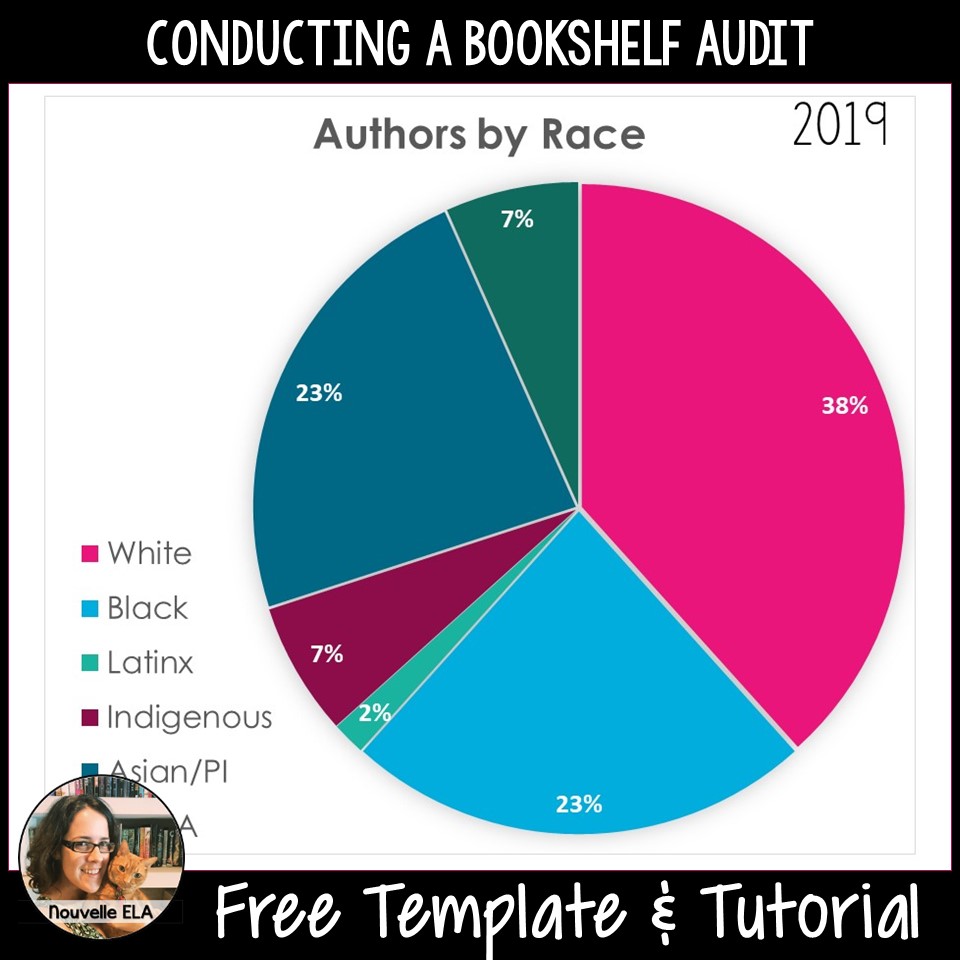

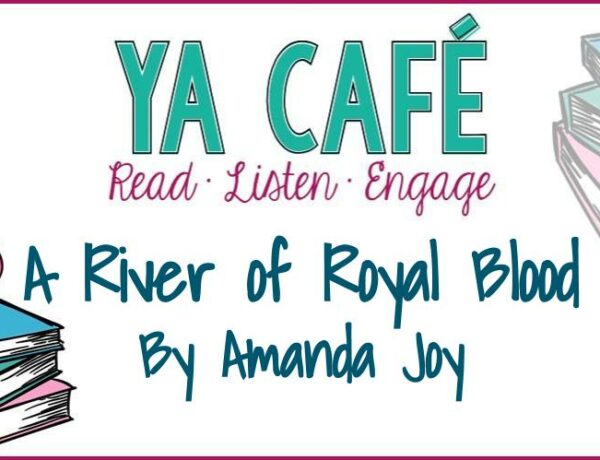
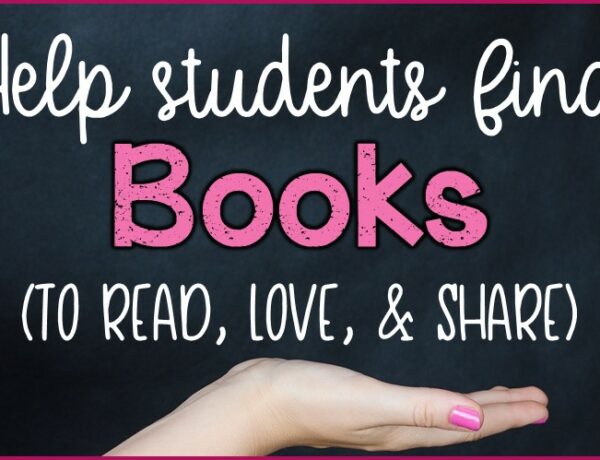
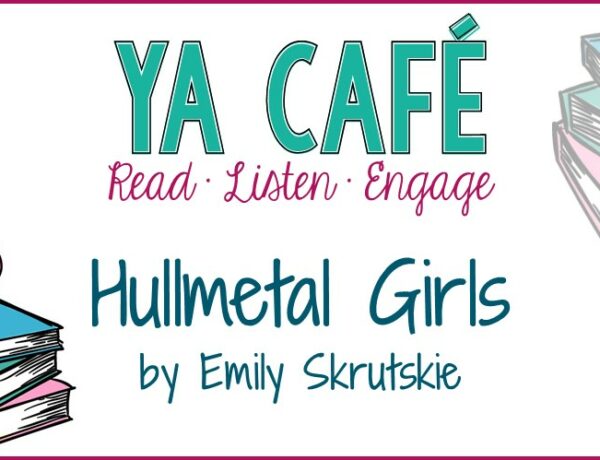
1 Comment
YA Cafe Podcast: Stronger, Faster, and More Beautiful
December 6, 2018 at 9:01 am[…] Amanda – Loudly singing Christmas carols, and their book tree. Pics on our IG/Twitter and a how to on Danielle’s blog! […]